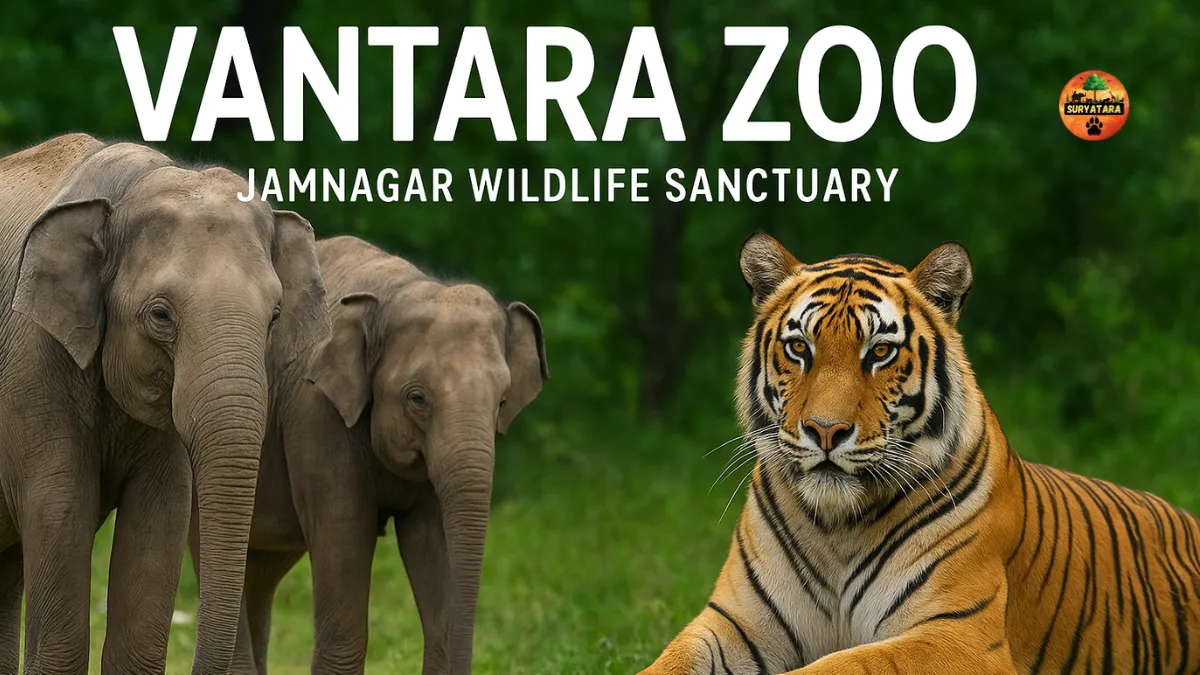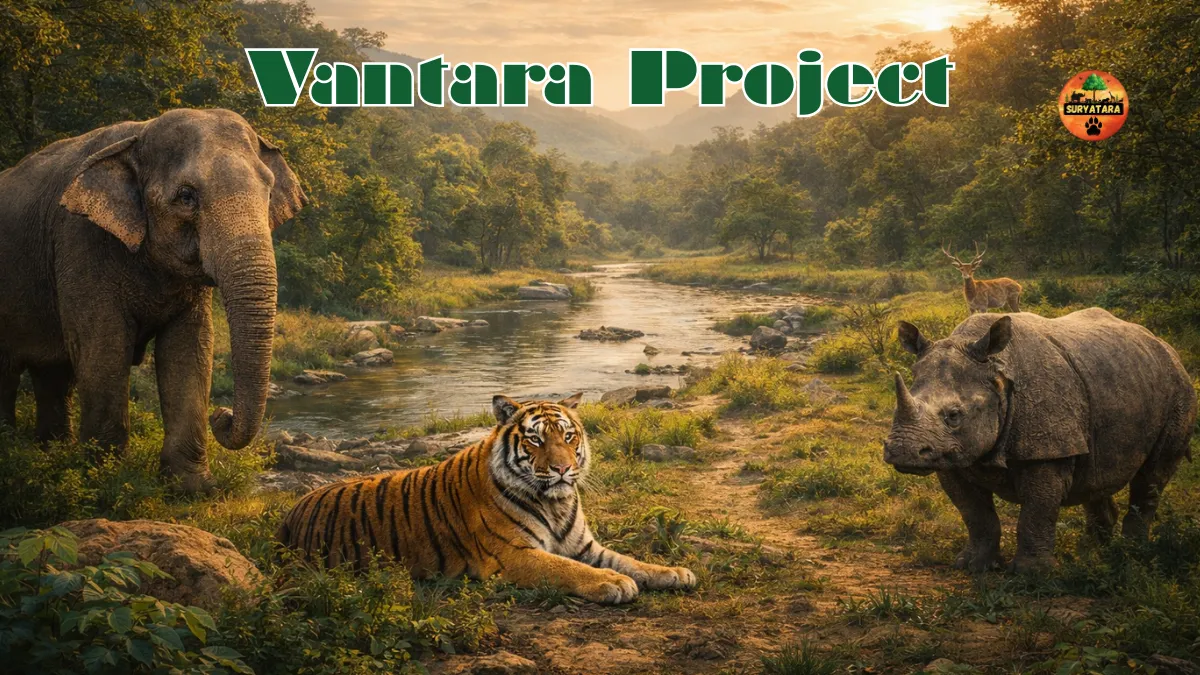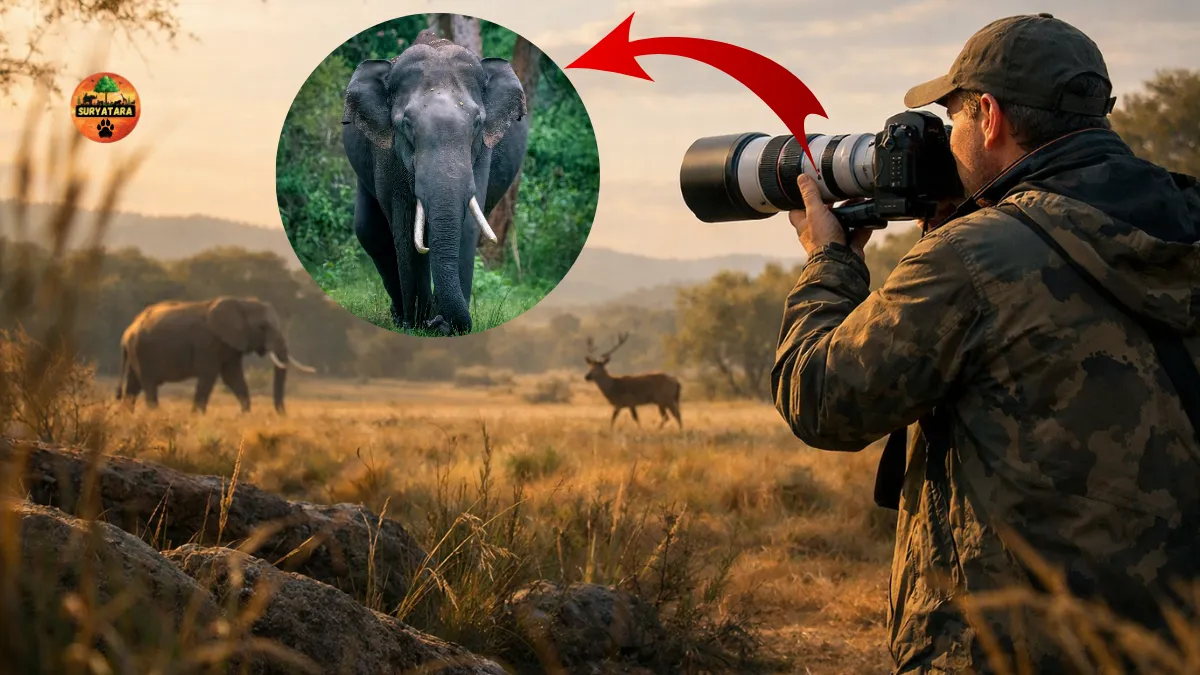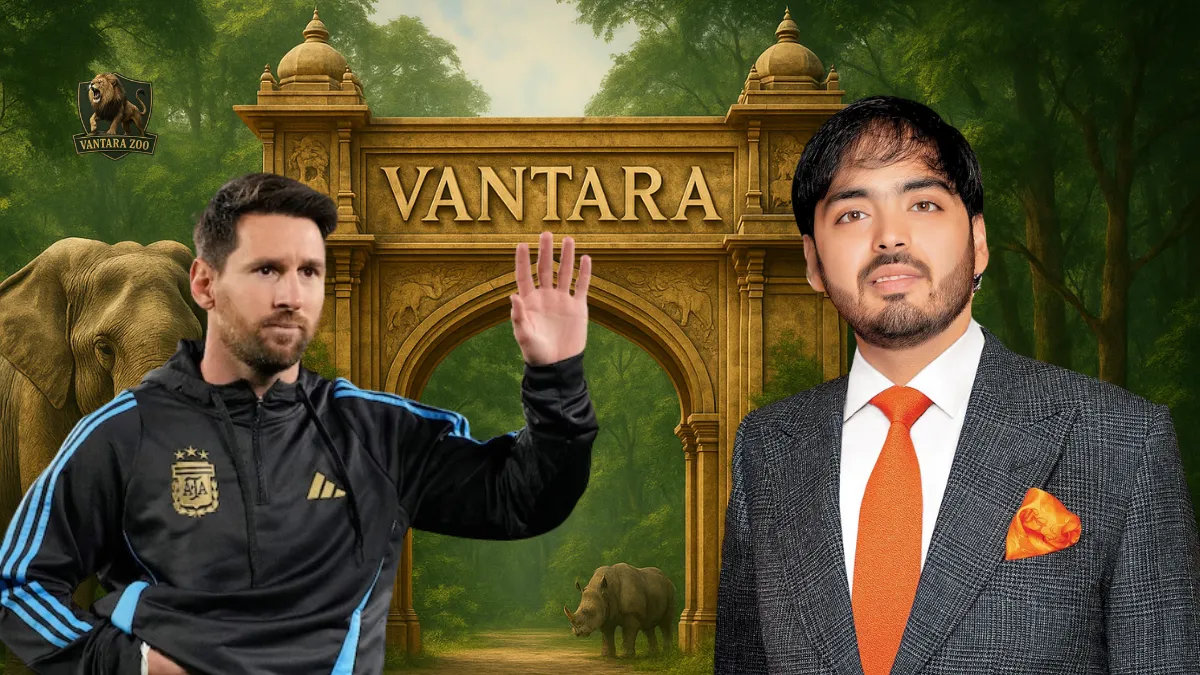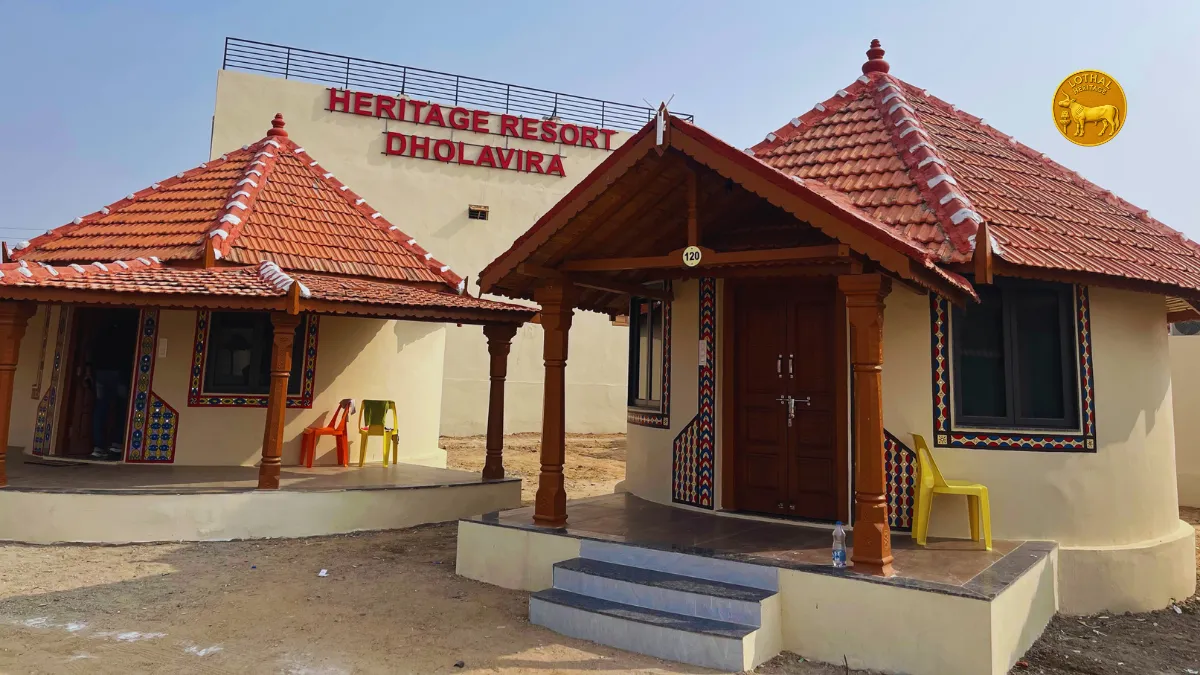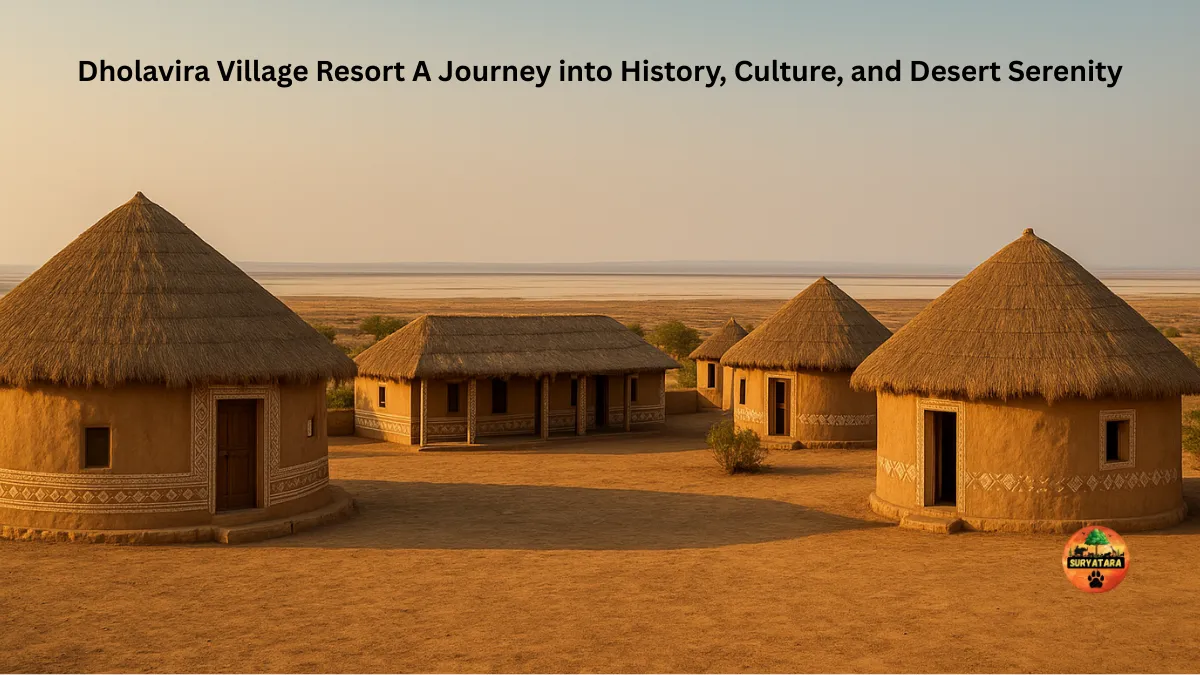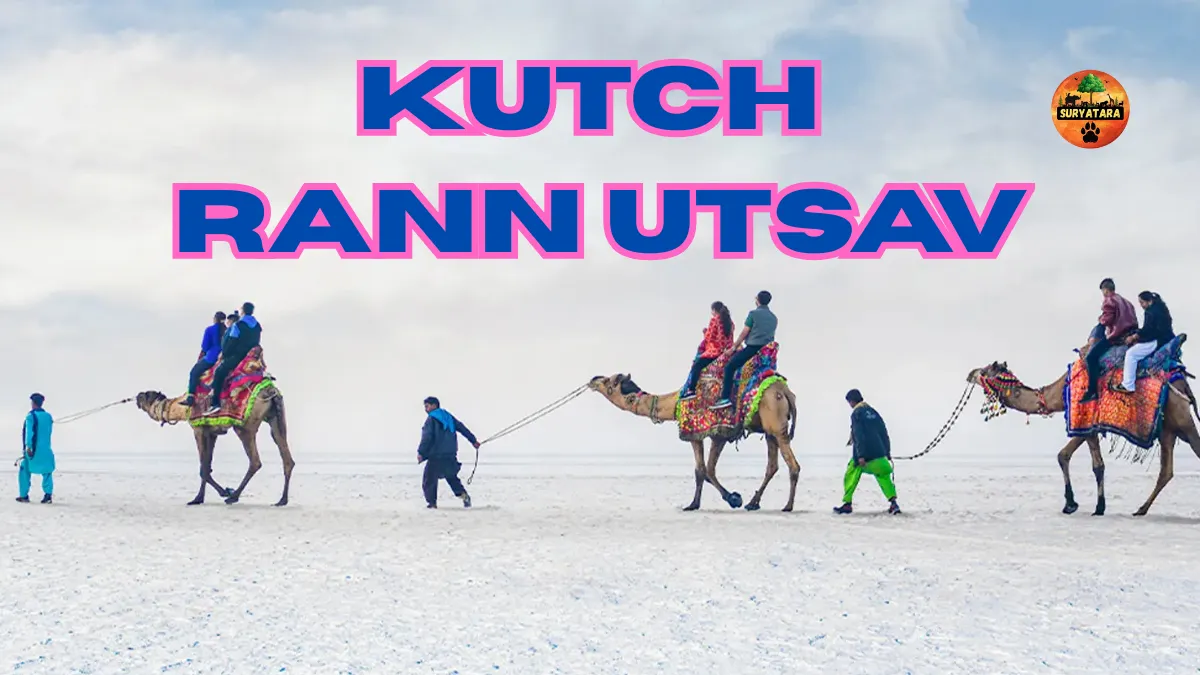Vantara Zoo is not just another zoo — it’s a transformative vision of wildlife conservation, compassion, and sustainability. Located in Jamnagar, Gujarat, this vast sanctuary is redefining the meaning of animal care in the 21st century. Designed as a global benchmark for rescue, rehabilitation, and research, Vantara Zoo stands at the crossroads of humanity and nature, where compassion meets science.
In this detailed article, we’ll explore everything about Vantara Zoo — from its mission and infrastructure to its conservation philosophy, species diversity, and global impact.
What Is Vantara Zoo?
Vantara Zoo is a world-class wildlife rescue and rehabilitation center spread across more than 35,00 acres of land in Jamnagar, western India. The word “Vantara” translates to “Star of the Forest,” symbolizing light, life, and renewal for rescued animals.
Established under the Reliance Foundation and led by Anant Ambani, the project reflects a deeply ethical approach to wildlife protection. Unlike traditional zoos that focus on entertainment, Vantara Zoo prioritizes animal welfare, ecological research, and sustainability.
Its vision is to create a haven for animals rescued from illegal captivity, human-animal conflicts, circuses, or distressing environments — giving them a second chance to live freely and peacefully.
The Mission and Philosophy of Vantara Zoo
The philosophy behind Vantara Zoo is simple yet powerful — “Compassion for all living beings.”
It operates on four core pillars: Rescue, Rehabilitation, Research, and Rewilding.
- Rescue: Animals from harsh conditions, circuses, private ownerships, or natural disasters are saved and transported to the zoo.
- Rehabilitation: They undergo medical treatments, nutrition programs, and behavioral therapy to regain health and stability.
- Research: Scientists and conservationists study genetics, animal behavior, and ecosystem restoration to improve wildlife management.
- Rewilding: When suitable, recovered animals are gradually reintroduced into safe natural habitats.
This structured approach makes Vantara Zoo more than a zoological park — it’s a living laboratory of compassion and science combined.
A Sanctuary, Not a Zoo
Unlike conventional zoos that confine animals in cages, Vantara Zoo recreates natural habitats. Each enclosure is designed to mimic the animal’s native ecosystem — whether it’s dense forest, grassland, wetland, or rocky terrain.
The animals roam freely across vast, open spaces. For instance, elephants enjoy huge forested zones with bathing pools and mud pits, while big cats like tigers and lions live in lush, forest-like enclosures with shade, water bodies, and enrichment activities.
Here, animals are not on display; they are at peace.
World-Class Veterinary and Rehabilitation Facilities
One of the most remarkable aspects of Vantara Zoo is its state-of-the-art veterinary hospital, which rivals the best wildlife medical centers globally.
The facility includes:
- Advanced diagnostic equipment such as MRI, CT scan, and ultrasound
- Specialized surgical theaters for large animals
- Intensive care units (ICUs) and quarantine zones
- Hydrotherapy pools and physiotherapy areas for injured elephants and other mammals
- 24/7 veterinary staff and wildlife experts
Each animal receives an individualized care plan — including diet charts, medical monitoring, and enrichment activities that promote both physical and mental well-being.
Sustainability and Green Innovation
Vantara Zoo is built around a vision of environmental harmony. Sustainability lies at the heart of its operations.
The zoo employs:
- Solar energy systems to minimize carbon footprint
- Rainwater harvesting for water conservation
- Waste recycling and composting to maintain a clean ecosystem
- AI-based animal monitoring systems for real-time health tracking
The entire infrastructure follows green building standards, proving that animal welfare and environmental responsibility can coexist beautifully.
The Elephant Sanctuary: A Symbol of Hope
Among Vantara’s many highlights, the Elephant Rehabilitation Center stands out as an emblem of compassion.
Here, over 260 rescued elephants — many of whom once suffered from exploitation in tourism, logging, or circuses — now live freely in a natural habitat.
They are given:
- Large forest zones to walk and socialize
- Clean ponds for bathing
- Healthy diets tailored by nutritionists
- Round-the-clock veterinary care
What’s most touching is that elephants form emotional bonds with their caregivers. Positive reinforcement techniques, rather than force, ensure their trust and happiness.
The elephant sanctuary is perhaps the clearest reflection of Vantara Zoo’s humane philosophy — turning cruelty into care, and captivity into freedom.
Diversity of Species at Vantara Zoo
Vantara Zoo is home to over 2,000 species and an estimated 150,000 animals from across the world. This includes:
- Big Cats: Bengal tigers, Asiatic lions, leopards, and cheetahs.
- Elephants: Both Asian and rescued temple elephants.
- Reptiles: Crocodiles, tortoises, and snakes.
- Birds: Parrots, eagles, owls, and numerous exotic species.
- Herbivores: Deer, antelopes, giraffes, and zebras.
Every species is housed in a climate-appropriate, scientifically managed environment to ensure long-term survival and comfort.
Research, Education, and Awareness
Beyond conservation, Vantara Zoo is envisioned as an educational and research hub for wildlife studies.
The center collaborates with veterinarians, biologists, and universities to conduct scientific research on animal genetics, reproductive health, and biodiversity conservation.
Planned programs include:
- Educational workshops for students
- Virtual wildlife experiences for schools and families
- Internships for zoology and veterinary students
- Conservation awareness campaigns
Through these efforts, Vantara Zoo aims to inspire a new generation of global citizens who understand that protecting animals means protecting the planet itself.
Technology Meets Compassion
Vantara Zoo integrates modern technology into every level of care. Each animal has a digital health ID, tracking its diet, vaccination, and medical history.
AI-based monitoring systems detect unusual behavior, temperature fluctuations, or stress levels — allowing quick intervention. Smart sensors also control temperature and humidity, ensuring every enclosure remains close to natural conditions.
Such technological innovations make Vantara Zoo one of the most advanced animal care facilities in the world.
Public Access and Future Tourism Potential
Currently, Vantara Zoo is not open to the general public. It functions as a closed rehabilitation and research facility, ensuring that animals live without unnecessary stress.
However, there are plans to open limited, guided tours in the future — with strict eco-tourism protocols. Visitors will likely be able to learn about conservation practices rather than simply “view animals.”
This approach aligns with the global trend toward responsible wildlife tourism, where education and empathy replace entertainment.
Challenges and Global Scrutiny
As with any large-scale project, Vantara Zoo has faced scrutiny and challenges.
Environmental activists and international watchdogs have raised concerns about:
- The ethical sourcing of certain animals
- The extreme climate of western India and its suitability for some foreign species
- The need for transparency in permits and animal transfers
Authorities, however, have maintained that all wildlife acquisitions are done legally under international conventions like CITES, and investigations are being fully cooperated with.
Despite these debates, the project remains a beacon of innovation and empathy in the field of conservation.
Vantara Zoo’s Global Relevance
What makes Vantara Zoo truly special is its global vision. It aligns with the United Nations’ Sustainable Development Goals (SDGs) — particularly Life on Land (Goal 15) and Responsible Consumption (Goal 12).
By integrating modern science, animal welfare, and environmental sustainability, the zoo sets a new global standard for ethical conservation.
Wildlife experts from the US, UK, and Europe have shown growing interest in Vantara’s model, with discussions about future research collaborations and conservation exchanges.
Also read: Madhuri Elephant to Return: Supreme Court Orders Joint Plan by October 6
Why Vantara Zoo Matters in Today’s World
In an era where wildlife habitats are shrinking and species extinction rates are rising, projects like Vantara Zoo remind humanity of its duty to coexist with nature.
It challenges the traditional notion of a “zoo” and instead presents a compassionate, holistic approach where:
- Animals are not performers, but patients and partners.
- Humans are not spectators, but caretakers.
- Conservation is not charity, but necessity.
By building a bridge between modern science and ancient Indian values of respect for all life, Vantara Zoo is showing the world that kindness can indeed be institutionalized.
Future Vision and Long-Term Goals
Vantara Zoo’s future roadmap includes:
- Expanding rescue centers across India for faster animal recovery.
- Creating mobile wildlife hospitals and rapid-response units.
- Launching global conservation partnerships with international zoos and NGOs.
- Establishing a biobank for genetic research and endangered species preservation.
- Developing immersive educational experiences for visitors, including augmented-reality wildlife tours.
The long-term dream is to transform Vantara into a global center of wildlife excellence, combining compassion, conservation, and cutting-edge science.
Also read: Vantara: A Global Model for Animal Welfare and Conservation
Conclusion
Vantara Zoo is more than a zoo — it’s a movement. A movement that believes in healing rather than displaying, protecting rather than profiting, and respecting rather than exploiting.
Each rescued animal at Vantara tells a story of survival and second chances. Through its vast landscape, advanced technology, and unwavering compassion, it is rewriting the global narrative of how humans should care for wildlife.
If successful, Vantara Zoo will not only redefine India’s image in wildlife conservation but also inspire the world to choose empathy over exploitation, coexistence over control.
